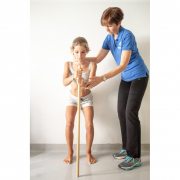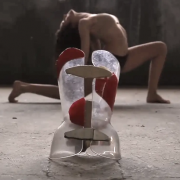What can parents do to help manage brace-wearing youngsters’ anger and outbursts?
Fighting scoliosis is a team effort. It is also a long, difficult and sometimes exhausting battle in which the patient, who is in the front line of course, is ably supported by various team members: a specialist doctor, a physiotherapist, an orthopaedic technician and, if necessary, a psychologist.
Nevertheless, the people best placed to support patients are the members of their own family. Parents, who directly experience the everyday problems faced by their child, can play an active and crucial role in ensuring that the treatment runs smoothly.
I would go so far as to say that their input is essential in order for the treatment even to begin.
A diagnosis of scoliosis always comes as a shock, and the course of action prescribed by the doctor is something no adolescent wants to hear. While they initially have little problem accepting the specific exercises they have to do, the prospect of wearing a brace is frightening. All they can think is that this is going to change everything, and they really don’t want that to happen!
In this situation, it is already clear that parents can play a crucial role. With their child probably completely overwrought, they need to inject a dose of rationality.
We, as a team of specialists, always try to address patients directly, striving, from the very outset, to involve them in every decision. We provide exhaustive explanations, as these are tools for interpreting and, above all, understanding the course that has been decided and prescribed.
However, on leaving our office or clinic, patients will inevitably take things out on their parents, and it will be up to them to find the best way of getting our words, and our message, across.
If you are reading this, you probably already appreciate that, in times of difficulty, we often find we have unexpected resources, and that, most of the time, it is possible to find a balance and follow doctor’s instructions properly.
As with all long undertakings, however, obstacles are always just around the corner, and you need to have the strength to stay “on track”.
Anger is a common and normal reaction in these patients, stemming from an understandable sense of injustice over the challenge they are facing.
In this circumstance, too, the whole team, but the parents primarily, must be ready to spring into action.
How can a parent best manage a child who is in difficulty with the treatment and gripped by a feeling of anger?
The first thing is to show empathy and understanding, remembering that things that are less important to us adults are not always viewed the same way by adolescents.
It is also important to remember that anger is a manifestation of distress, which can have various causes.
Parents must strive to be a point of reference and a channel through which their child can vent his or her feelings, in order to help him/her recognise and correctly express the anger he/she is feeling in the face of this difficult situation. The next step is to help the child to reason more clearly, reminding him/her of all the challenges he/she has thus far faced and overcome.
Parents must also be the first to believe in the course of treatment, and must continue to support it right through to its conclusion, having full confidence in the doctor and helping the child appreciate the importance of persevering. For these patients, this is perhaps the first time in their life that they have had to deal with a personal problem.
If they can learn to manage their anger and accept a compromise between what they want and what they can have (within the constraints of the treatment of course), then they will have learned, first hand, that, with a little patience and the support of those closest to you, difficult situations can always be overcome.
Note
This is one of the posts published in the Isico blog, www.scoliosi.org, a dedicated space where patients can ask questions and swap experiences, but it is also a place where those involved in treating scoliosis can take a more in-depth look at a series of topics and also engage with patients.
—–












Leave a Reply
Want to join the discussion?Feel free to contribute!